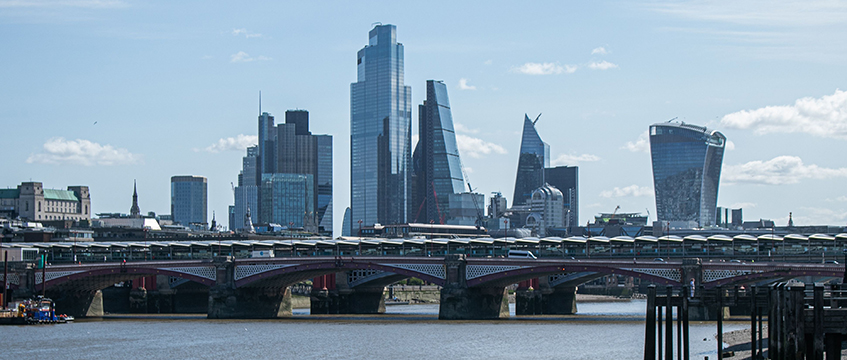This was never going to be an easy year for London’s office market. With the first months spent in lockdown, precious few investment deals were closed and occupiers – for the most part – had no idea what they now needed from their workplaces.
But as restrictions eased, the fog cleared. Buyers poured £3bn into the central London submarkets over the third quarter alone, according to JLL, while big corporates were back to negotiating monster prelets. All of them were hungry for one thing: top-quality, sustainable buildings.
As 2021 draws to a close, EG looks back at a year of turbulence and opportunity for the capital.
Green goals
As more people around the globe woke up to the fact that climate change is humanity’s most pressing issue, companies put a greater emphasis on their environmental, social and governance agendas.
In practice, this meant that occupiers and investors alike were more focused than ever before on buildings with low carbon footprints. “[Demand] has been focused hugely on premium buildings that meet net-zero-carbon goals – something that we are targeting on the three large schemes we are currently progressing,” says Tom Appleton, chairman of Rocket Properties.
“This is not just because we are conscious of our environmental impact, but because commercially the tenants we are looking for have the same agenda that we do. The ESG movement transcends every part of the property industry, and it’s been a year of rapid evolution on this front.”
Part of that evolution has been a growing clamour to cut embodied carbon. Planning authorities may still be giving the green light to controversial demolition jobs – such as Marks & Spencer’s upcoming scheme on Oxford Street – but many developers have judged that the wind is blowing in favour of retrofitting buildings where possible.
It all adds up to “a massive opportunity for innovative, skilled property professionals who can create the sustainable workplaces of the future,” says Peter Ferrari, chief executive of AshbyCapital. “It is becoming harder to make the case for new-build, though, and so I expect to see increased repurposing of existing buildings and less new-build, thanks to the heightened focus on embodied carbon.”
The market gets back on its feet
Early in the year, even the most optimistic dealmakers in London’s office market could do little more than talk about green shoots. In the first quarter, investment volumes fell 68% below the 10-year average. However, advertising agency Omnicom’s £440m deal to buy its own headquarters at 2 & 3 Bankside became the poster child for London’s office recovery in the autumn.
That deal completed at more than £30m above the guide price and highlighted “clear investor appetite for best-in-class real estate,” according to Stephen Down, head of central London investment at Savills. “We expect [this] to continue into 2022 as investors look to own quality real estate which meets occupiers’ evolving sustainability standards.”
But not every transaction reached those heights, and some deals showed that pricing has suffered during another year of uncertainty. Most recently, State Street’s UK headquarters, a tower in struggling Canary Wharf, was picked up at a knock-down price by Brookfield. The Canadian giant is paying M&G £250m for the block at 20 Churchill Place, which reflects a 6% yield and an eye-watering £50m reduction on the price it almost paid in March 2020.
After 18 months of home-working, Zoom fatigue took hold of the country’s workforce, spurring office employees to head back into the workplace en masse – albeit mainly on Tuesdays, Wednesdays and Thursdays – in September. Facebook was that month revealed to have taken a 310,000 sq ft lease at 1 Triton Square, NW1, part of British Land’s Regent’s Place campus, in the biggest letting of the year.
“2021 was the year when we turned the corner on the working from home debate,” says AshbyCapital’s Ferrari. “Companies realised that the workplace has a very important role to play in the success of their business, through their culture, maximising productivity and attracting talent, all of which really suffers if people work from home permanently.”
“Bifurcation” continues
It is also notable that it is only the good offices that are doing well. The so-called flight to quality became even more pronounced in 2021.
John Mulqueen, head of offices in the EMEA region at CBRE Investment Management, says: “2021 has been characterised by a distinct ongoing bifurcation of the office market, with both occupier and investor interest strongly focused on best-in-class, sustainable assets.”
He adds: “As demand continues to recover, we expect an increasing mismatch between the quality of space available and occupiers’ aspirations, creating a sustained divergence between best-in-class and average-quality offices.”
It is a trend that will surely cause headaches for the owners of sub-par office blocks. For prime office developers and landlords, however, 2021 may finally have given them some cause for hope.
Discover which agents have transacted the most space in the London submarkets this year >>
To send feedback, e-mail alex.daniel@eg.co.uk or tweet @alexmdaniel or @EGPropertyNews











